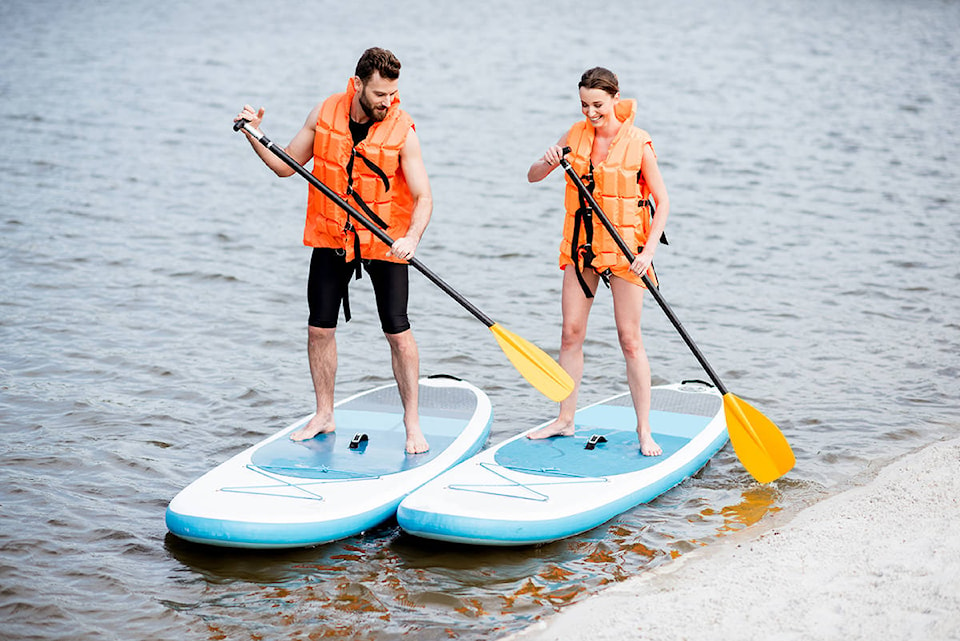Barb Thomson
Special to The Record
Imagine this scenario: We were motoring north through Thulin Passage on our 31-foot sailboat. Nearing Sarah Point and leaving the Copeland Islands behind, the passage narrows before a starboard turn towards the entrance to Desolation Sound. The water was a bright reflective chop, and I was full of salty carbohydrates, rocked by the wakes of power boats that easily slalomed around us in a busy passage.
Might be something in the water, I said, reaching for the binoculars. It looked like a small brown ball, smack in the middle of the channel. Then an arm came out of the water and a person in a wetsuit climbed onto a paddleboard. A powerboat passed us, and from the exchange, we saw the boaters knew the paddleboarder – the little brown ball that we or any one of the boats that had roared by us, could have roared right over. A life preserver or a whistle could have warned us that someone was in the water.
Stand up paddleboards are just another wonderful way to experience being on the water and are a relatively new form of marine traffic. In 2017, Transport Canada made special revisions under the Small Vessels Regulations that eased requirements not suited to paddleboards (like bailing buckets), while clarifying safety equipment that is required. Paddlers are required to have with them:
• a personal flotation device (PFD)
• a throwbag (15 metres of floating rope)
• a whistle (or sound-signalling device)
• a water-tight flashlight (after sunset, before sunrise, or restricted visibility).
Here are a couple of exceptions: if the paddler is wearing the PFD, the rope is not required. If the board is only being used for yoga or surfing, and not navigation, none of the safety equipment is mandatory. Am I staying put or am I going somewhere? Fines vary from $200 to $500 for wearing a hat and sunglasses instead of a PFD and whistle. What you need depends on what you’re doing.
Paddleboarders have a brilliant resource in Paddle Canada, a national non-profit organization whose purpose is to “promote, educate, and support the recreational paddling community, paddling instructors and partners.” Their website provides current links to regulations and training programs for paddleboards, canoes, kayaks, and the people who love them.
Paddle Canada: https://bit.ly/2zZ1jeK
Government of Canada Amending the Small Vessel Regulations:https://bit.ly/3dnrKbG
